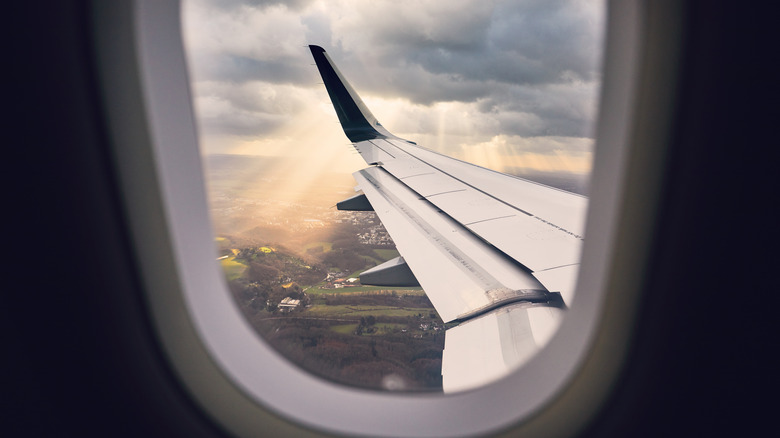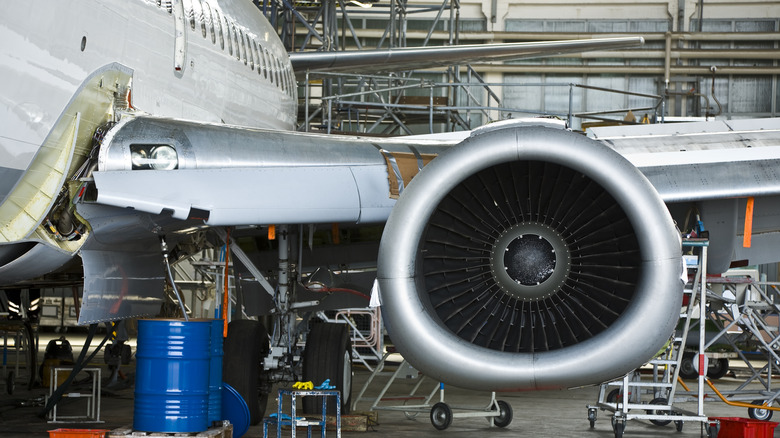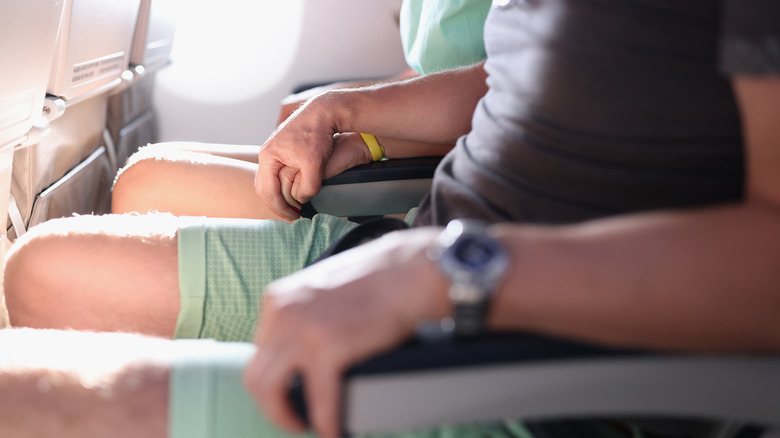Why You Shouldn't Stress When You See An Airplane's Wings Wobble
Experiencing an exceedingly turbulent flight is stressful enough, but it doesn't help when you look out the window to see the airplane wings wobbling at 30,000 feet. To our untrained eyes, the wings can appear to contort, strain, and wobble in a max-effort attempt to keep the plane in the air. As we jostle in our seats and our palms begin to sweat, we can imagine strained pilots desperately pulling on the yoke and stick (the plane's steering instruments) to control the sky-besieged aircraft.
However, this worrying situation is only playing out in our imaginations and on Hollywood sets. In fact, wobbling and bending wings are actually safety features of the plane's design. In turbulent weather, the plane's wings are engineered to wobble, bend, and oscillate up and down. It's simply a matter of physics. If you can hold tight, we'll explain why wobbling wings aren't something to worry about when riding the not-so-friendly skies.
Wings are designed to wobble
Airplane wings are made of aerospace-grade aluminum, which is an alloy comparable to the strength of steel. While the wings are made of incredibly strong material, the entire aircraft is designed to allow the wings to bend in turbulence. The wings also feature metal beams called "spars," which help to support the load of the wings and connect to the fuselage. So, even if it appears the wings will tear off the plane at any moment, it's pretty structurally impossible for this to happen.
The Federal Aviation Administration has a requirement in place that any aircraft be able withstand 150% of the maximum expected load for four seconds. In other words, through strength testing, airplane wings must be able to withstand turbulence that's 50% worse than a plane's ever experienced in a real-world scenario without breaking. To withstand this level of strain, wings are designed like big springs, making them appear wobbly in turbulent weather.
Turbulence is common and nothing to worry about
Turbulence is a common occurrence and a result of changes in jet streams, atmospheric pressure, weather fronts, and thunderstorms. Wings wobbling during turbulence is a result of pretty straightforward physics. As the plane encounters higher air density, the wings are lifted and the plane gains altitude. Areas of less air density cause the wings to bend back down as the plane loses altitude. In other words, the changes in the force of lift result in wobbling wings and turbulence. It's similar to a boat moving up and down with the ocean, but instead of water, you're dealing with air.
If you're someone who really doesn't like turbulence, consider grabbing an airplane seat in the middle of the plane. Passengers seated over the wings actually experience the least turbulence during a bumpy flight. However, if seeing the wings wobble during flights still bothers you, you can also always pull the window shade down.


